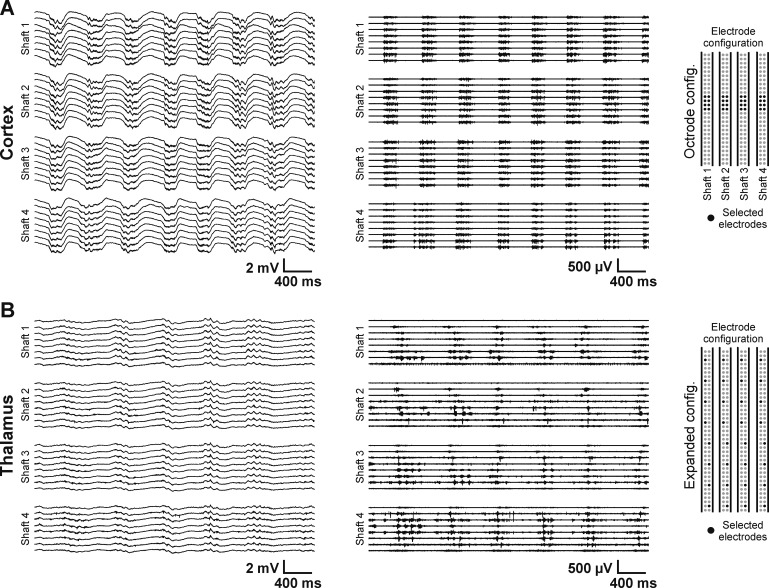Fig. 2.
Representative 4-s-long continuous traces recorded with the 4-shank EDC probe. A: wideband recording (left; 0.1–8,500 Hz) and unit activity (middle; obtained by filtering the trace at left between 500 and 5,000 Hz) from layer 5 of the somatosensory cortex of the rat under ketamine-xylazine anesthesia. On each shaft, 8 adjacent recording sites were selected (octrode configuration; right). The rhythmic alternation of anesthesia-induced slow waves can be observed on the traces, with high unit activity during up-states and the absence of spikes during down-states. Note the quasi-synchronous onset of up-states between the cortical channels. B: wideband (left) and unit activity (middle) recordings from the thalamus of another anesthetized rat. In this case, the selected recording sites were distributed with equal distances along the probe shafts covering a vertical distance of ∼2 mm (expanded configuration; right). The electrodes recorded the activity of several thalamic nuclei and regions adjacent to the thalamus. The slow-wave activity is present in the thalamus, as well, but the spatiotemporal properties of thalamic slow waves are different compared with the cortex.

